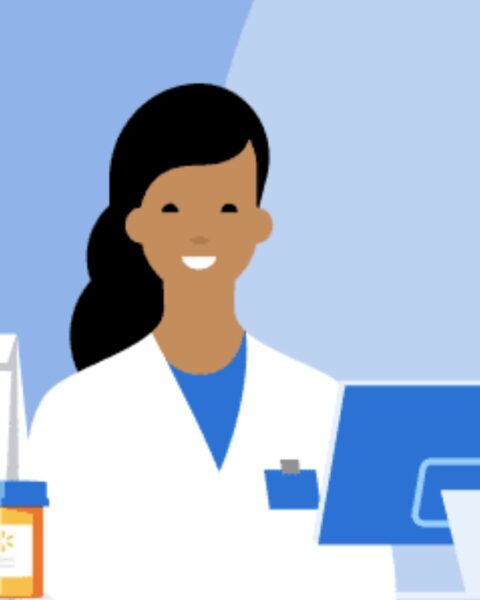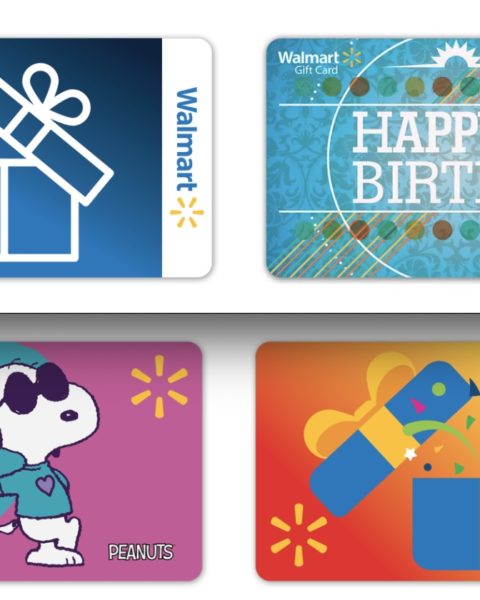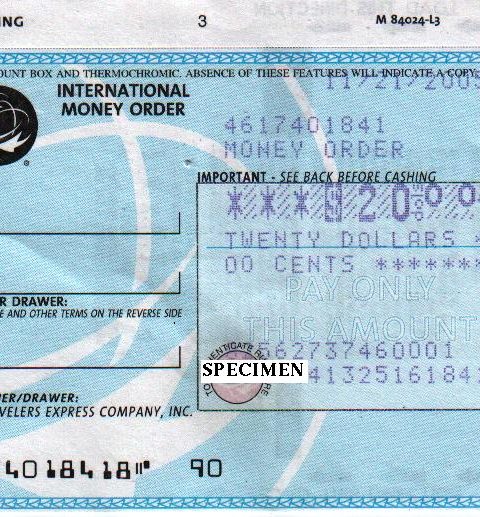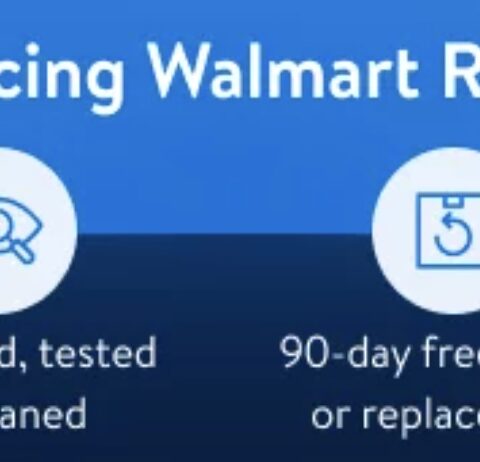Unfortunately, there isn’t a lot of clear or reliable information available online to explain what an OTC card is or how to use it. That’s why we’ve put together this complete guide to understanding your OTC benefits and how to shop with an OTC card at Walmart.

OTC stands for “over-the-counter” and refers to a certain type of financial benefit afforded to some Medicare recipients. OTC benefits assist Medicare recipients with purchasing certain medications, supplements, and other common medical supplies associated with their healthcare coverage.
According to MedicareFAQ.com, “OTC Medicare cards help cover the cost of over-the-counter drugs for seniors enrolled in certain Medicare Advantage plans.” Not all Medicare Advantage plans include these cards, so you will need to check your Medicare account to find out what your personal benefits include.
Contents
The Benefits Of Shopping With An OTC Card
If your Medicare Advantage plan includes an OTC card, you can take advantage of some major benefits when shopping at Walmart and other major retailers.
Here is a list of benefits enjoyed by OTC recipients…
OTC is accepted by many major retailers
A few of the common stores included in the OTC network include Walgreens, CVS, Walmart, Duane Reade, Rite Aid, Dollar General, Kroger, Publix, Target, and Family Dollar. So, wherever you decide to shop, you will almost always be able to use your OTC card to pay for your basic over-the-counter medical expenses.
You won’t pay out of pocket for medications and healthcare products
While not every Medicare Advantage plan includes an OTC card, those that do provide a huge benefit to recipients by covering the cost of basic medical supplies. These benefits are funded through the US government and distributed by the private insurance carrier associated with your Medicare plan. Monthly OTC benefit amounts vary by region and personal circumstance and can range from $20 per month all the way up to $150 per month.
Save money on groceries
While not every OTC recipient is eligible to purchase food with their OTC card, some plans cover the purchase of healthy foods such as fresh fruits and vegetables. This can help OTC recipients cut down on their monthly grocery bill by subsidizing the purchase of certain foods. To shop for OTC-eligible foods on Walmart.com, click here.
Shop conveniently online
In most cases, you can use your OTC card to shop however you like, whether that’s in person or online. If you choose to shop at Walmart.com, simply browse for the items you need online, then pay with your OTC card at checkout.
Get free shipping from Walmart for orders over $35
Another benefit of using your OTC card at Walmart is that you’ll receive free shipping for orders over $35 when you shop online. This includes same-day delivery. (If you do not meet this order threshold, you will be charged a small delivery charge that your OTC card will not cover.)
How To Activate Your OTC Card
The easiest way to activate your OTC card is to visit the OTC Network website.
From there, you will be prompted to enter your OTC card number. Once you’ve done this for the first time, your card will be activated and ready to use.
If your card is already active, you can use the OTC Network website to check your balance, find participating retailers, and check item eligibility.
If you have trouble activating or using your OTC card, contact OTC Card Services over the phone at 1-888-682-2400.
Regardless of who your independent Medicare provider is, you can manage your OTC card anytime through the OTC Network.
Some of the insurance companies providing Medicare Advantage plans in 2023 include Anthem, United Healthcare, Blue Cross Blue Shield, and Aetna. The key difference between Medicare Advantage plans and regular Medicare is that Advantage plans are distributed by private insurance carriers. Those receiving basic Medicare benefits directly through the federal government do not qualify for OTC benefits.
How To Pay Using Your OTC Card At Walmart
When shopping at Walmart with your OTC card, you can make purchases either in store or online, depending on your preference.
In Store
To shop with your OTC card at a Walmart location in person, be sure to familiarize yourself with the types of items your OTC card will cover first (list provided below). Some items may be labeled as “OTC eligible” on their shelf tags, but this will not always be the case.
Remember that OTC is primarily used to cover the cost of over-the-counter cold, flu, allergy, and pain medication as well as certain medical equipment.
Once you’ve picked out the items you want to purchase, proceed to the checkout area as you normally would. You can pay either at a traditional register or through self checkout.
When it comes time to provide your payment, simply hand your OTC card to the cashier or swipe your card at the self checkout machine.
If your card has an insufficient balance or if some of your items are not covered by your OTC benefits, you will be notified by the cashier or machine. You will have the option of either returning certain items or paying for the difference with another form of payment.
Online
Shopping for OTC items online is fairly simple, as long as you know how to choose the right items. (Below this section you will find a detailed list of eligible and ineligible items.)
Unfortunately, Walmart.com’s category feature isn’t entirely reliable when it comes to sorting OTC-eligible items. When you search for OTC Medicare items on Walmart.com, it brings you to a page labeled “OTC Network Medicaid.” This page lists a bunch of items not covered by OTC, including toilet paper, trash bags, bathroom scales, mops, and deodorant. It’s also worth noting that Medicaid is not the program affiliated with OTC benefits.
Once you’ve filled your cart with OTC-eligible items, click “checkout” and proceed to the payment process as you normally would.
To pay using your OTC card on Walmart.com or through the Walmart app, you will need to create a Walmart account first. Once you’ve done this, you can add your OTC card to your digital wallet. Then, once you arrive at the checkout process, simply select your OTC card as your preferred payment method.
For a description of how to add a benefits card to your Walmart wallet, click here. (You can skip forward to the 00:35 mark for the description.)
Some sources online claim that you can pay with your OTC card at checkout simply by entering it as a “gift card.” However, we have not been able to confirm whether or not this is true.
If you need any help paying for your Walmart.com purchase with your OTC card, you can always contact Walmart’s customer service line at 1-800-925-6278.
OTC Eligible Items At Walmart
The standard items covered by OTC include:
- Over-the-counter medications
- Vitamins and supplements
- Face masks
- Durable medical equipment
- Select health foods (plan dependent)
Below is a list of specific medication types and equipment covered by OTC benefits:
- Cold, cough, and flu medications
- Antibiotic ointment
- Allergy and sinus medication
- Bandages and other first-aid materials
- Denture products
- Digestive medications
- Orthopedic support
- Pain relievers
- Sleep aids
- Wart removal products
- Hand sanitizer
- Face masks
- Protective gloves
Items Not Covered
As a general rule, OTC does not cover anything that is not used to treat a specific medical condition. General health and wellness items used for hygiene maintenance and basic personal care are not covered.
OTC cards do not cover the following items:
- Prescription medications
- Standard dental hygiene products (toothpaste, floss, mouthwash, etc.)
- Hair care products (shampoo, etc.)
- Cosmetics (including things like teeth whitening strips and wrinkle creams)
- Shaving products (razors, shaving cream, etc.)
- Toilet paper or paper towels
- Foot care products
- Weight loss or weight management products
OTC also does not cover the cost of herbal or botanical healthcare products, even if they are being used to treat a certain medical condition. This is because herbal healthcare products are typically not approved by the FDA.
Most OTC benefits plans do not cover diabetes supplies such as syringes and monitoring devices. However, you should always double check with your plan benefits to be sure of your coverage.






